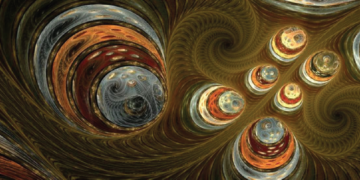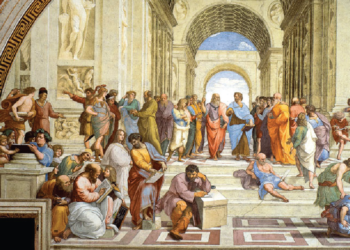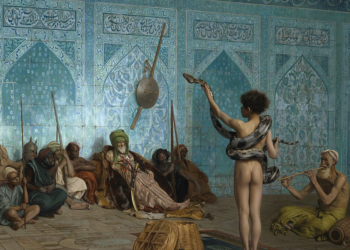Reification
1) Reification in Marx:
According to Marxism, the process by which social ties are viewed as intrinsic characteristics of the people involved in them or characteristics of some object of the relation, such as a traded commodity, is known as reification, or “making into a thing”. This suggests that objects are changed into subjects and that subjects are changed into objects, resulting in the passive or determined nature of subjects and the active, determining nature of objects. A reification effect known as hypostatization is the assumption that anything that can be named or conceived of in an abstract way must genuinely exist. This is an ontological and epistemological mistake. The idea is similar to, but distinct from, the notions of alienation and commodity fetishism put out by Marx. The general state of estrangement experienced by humans is known as alienation; reification is one particular type of alienation; and commodity fetishism is one particular type of reification.
Thus, the criticism of political economics by Marx that underpins the idea of reification is present. Marx defined capitalism as the widespread production of commodities. He approaches the phenomena of the commodity as a riddle that needs to be solved in the first few chapters of Capital. A commodity is thus a mysterious thing, according to the author, “simply because in it the social character of men’s labour appears to them as an objective character stamped upon the product of that labour, because the relation of the producers to the sum total of their labour is presented to them as a social relation, existing not between themselves but between the products of their labour” (Marx 1906 reprint, I, 83).
Since commodities are handled as though they were alive and had a will and will of their own, Marx refers to this as “fetishism”. This has never happened before in human history. Most things were created before the capitalist era for usage. However, capitalism is a market society in which the exchange value of products takes precedence over their utility value. The choice of what to create, how much to produce, where to produce, and how to produce it is based on marketability, not on human need. Additionally, because exchange value is expressed as a quantity, or a price, the social world is for the first time quantified across all domains, not just in specific ones. Under capitalism, those quantities and the laws that govern them—not the specific attributes of people and things—are what are real in the sense that they have a meaningful impact on the world. This criticism of the division and quantification of social reality from the market to society at large is generalised by Lukács’ concept of reification.
Marx goes into great length about the relationship between the worker and the machine in Capital. An integral part of the industrial revolution was the deskilling of labour. The machines that are maintained by unskilled women and children progressively replace craft employees. Instead of being the centre and organiser of the manufacturing process, the worker is now an external party to it. The worker merely performs routine maintenance or repairs on the machine, which has its own logic and laws of motion.
Marx used the notion of alienation to characterise this interaction with the outside world in his early writing. Nearly ten years after Lukács produced History and Class Consciousness, theManuscripts of 1844, in which he first presented this idea, were finally made available. However, Lukács pieced together the crucial concept from other passages in Marx’s writing. Marx uses the term “alienation” to describe the process by which the common product of the working class seizes control over its maker.
Workers create all the structures and machines of capitalism, but they also become enslaved by their own creations. According to Marx, the “living labour” of employees today is dominated by “dead labour”, the crystallised efforts of so many people over many generations. Reclaiming this alienated world is what revolution is all about. This approach is summarised by Lukács’ concept of reification, with the caveat that the dominance takes the shape of impersonal laws and logical institutions. Workers produce a world of reified social “things” that is ruled by law, not only the machines and organisations that rule them. As a result, the workers’ goods dominate them like an overwhelming second nature.
2) Reification in Lukacs:
Lukács defines reification as substituting social relations for goods. An institution, like a university, looks to be a solid, substantial item while actually being a complex of social ties. Dereification is the act of releasing social structures from their false thinghood and reclaiming their contingency. This concept is typically stated as an ideology theory, but a deeper argument about the nature of action, or practise as Lukács refers to it, is implicit in the comparison between social relations and things. Practices create a universe where reified objects manifest.
These objects are comprehended “immediately” or without critical thought, in a reified context. That viewpoint is derived from the practises, not their source, yet the viewpoint contributes to the practises that are essential to the continuation of the world.
The relationship between structure and agency is thus explained by the theory of reification. While dereification involves a different type of practise with the ability to not only penetrate the illusion of reification but also to modify the practises and the structures it develops, reification gives structure by choosing a specific style of practise that replicates the institutions.
The left’s initial appropriator of the critique of technical rationalism was Lukács. Reification is the invasion of a worldview consistent with nature into society. What’s vital, he says, is to understand that all human relations progressively take on the form of objectivity of the abstract parts of the conceptual systems of the natural sciences and of the abstract substrata of the laws of nature. Additionally, the subject of this activity increasingly encompasses the attitude of the experimenter as well as the attitude of the pure viewer of these intentionally abstract experiences (Lukács 1971, 131). Thus, “rationality” has been assimilated into culture. The crucial sense in which Marx and Weber explain rationality’s institutionalisation in markets and bureaucracies under capitalism is of course that it is merely instrumental in this setting.
Lukács had a more focused idea in mind. He was not against the indisputable reality of things. He did not even object to the existence of strong social structures. He was more worried about the formation of a social environment similar to second nature. It is the particular type of thing hood, one that places the subject in a technical relationship to a world ruled by law, that is in doubt.
Within the confines of reification, people relate to society in the same way they do to natural objects. This relationship creates structures that, rather than being protected from change by an illusory naturalisation, would better serve human needs if they were subject to continuous adjustment from below. According to Lukács, the reality that confronts man in both theory and practise has a certain objectivity that, if correctly considered and comprehended, need never cling fast in an immediacy similar to that of the forms encountered earlier on.
Accordingly, this objectivity must be understandable as a continual factor mediating between the past and the future, and it must be possible to show that it is always the result of man and the growth of society (Lukács 1971, 159).
Reification is ultimately dependent on fragmentation. In addition to being socially identified as individuals rather than as members of a family, clan, or class, individuals are separated from one another and pitted against one another as independent “objects” with distinct rules of motion.
The fragments are thus forced into accidental and external interactions to make up for their autonomization. The “anarchy of production” is what Marx referred to as such fragmentation in the competitive capitalist economy. Commodity exchange serves as the connecting mechanism for the dispersed units.
3) Criticisms of the theory:
The “ideology of reification,” according to French philosopher Louis Althusser, finds “things” everywhere in interpersonal interactions. Marx underwent substantial theoretical and methodological change between his early work and his mature work, according to Althusser’s thesis of the “epistemological split,” which forms the basis of his criticism.
Even though Marx uses the idea of reification in Das Kapital, Althusser discovers that the idea of alienation, which was developed in the early chapters of The German Ideology and in the Economic and Philosophical Manuscripts of 1844, had a significant influence on reification. This “Western Marxist” idea is reformulated by Frankfurt School philosopher Axel Honneth (2008) in terms of intersubjective relations of power and recognition. Karl Marx and György Lukács believed that all types of reification were caused by pathologies of intersubjectively based fights for recognition. Honneth disagrees, arguing that all forms of reification are caused by pathologies of intersubjectively based struggles for recognition .












